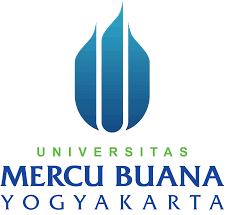Model of the Influence of Attitude and Motivation on Safety Culture with Compliance as an Intervening Variable on Healthcare Professional
DOI:
https://doi.org/10.55927/fjst.v4i3.40Keywords:
Safety Culture, Attitude Healthcare Professional, Motivation, Intervening Variable, Incident Reporting ComplianceAbstract
Safety Culture is essential for reducing workplace incidents. At Dr. D Hospital, its five dimensions remain unmet, reflecting poor attitudes and motivations in pre-survey results. This study examines their impact on safety culture and incident reporting compliance using a cross-sectional design with 105 respondents and SEM-PLS analysis. The F Test showed a strong positive relationship, confirming that attitudes and motivations significantly influence safety culture through compliance as an intervening variable. However, attitudes and motivations have a stronger direct effect than compliance. Compliance also significantly impacts safety culture, with motivation playing a key role. Strengthening attitudes, motivations, and reporting compliance fosters a robust safety culture. Developing a reporting system encourages Healthcare Professionals to report incidents, enhancing overall safety.
References
Abate M, Mulissa Z, Magge H, Bitewulign B, Kiflie A, Biadgo A, et al. (2022). Key factors influencing motivation among health extension workers and health care professionals in four regions of Ethiopia: A cross-sectional study. PLoS One. 17(9):e0272551.
Ayi HR, Hon CY. (2018). Safety culture and safety compliance in academic laboratories: A Canadian perspective. J Chem Heal Saf [Internet]. 25(6):6–12. Available from: https://www.sciencedirect.com/science/article/pii/S1871553218300392
Al-Busaidi AS. (2010). Field Guide to the Difficult Patient Interview. Vol. 10, Sultan Qaboos University Medical Journal. P. 285–6.
Alzahrani N, Jones R, Abdel-Latif ME. (2018). Attitudes of doctors and nurses toward patient safety within emergency departments of two Saudi Arabian hospitals. BMC Health Serv Res. 18(1):1–7.
Antonsen S. (2017). Safety Culture: Theory, Method and Improvement [Internet]. CRC Press. Available from: https://books.google.co.id/books?id=KgUmDwAAQBAJ
Ajzen I. (1991). The theory of planned behavior. Organ Behav Hum Decis Process [Internet]. 50(2):179–211. Available from: https://www.sciencedirect.com/science/article/pii/074959789190020T
Agustina FU, Handiyani H, Afriani T, Hospital S, Sumatera S. (2022). Determinants of Nurses’ Safety Attitudes in a Hospital Setting. A nurse’s safety attitude is one of the most im- Methods This quantitative study used a cross-sectional. 25(September 2021):63–73.
Ayyad A, Baker NA, Oweidat I, Al-mugheed K, Alsenany SA, Mohammed S, et al. (2024). Knowledge, attitudes, and practices toward Patient Safety among nurses in health centers. 1–10.
Borghi J, Lohmann J, Dale E, Meheus F, Goudge J, Oboirien K, et al. (2018). How to do (or not to do)… Measuring health worker motivation in surveys in low- and middle-income countries. Health Policy Plan. 33(2):192–203.
Buxton, T. (n.d.). The Mind Map Book: Unlock your creativity. BBC Active.
Cahyaningrum, F. (2024). THE ATTITUDE OF STUDENTS TOWARDS CHEMISTRY LEARNING: IN CHEMISTRY LEARNING. Indonesian Journal of Science Education. 1(1):1–10.
Curtis SJ, Trewin A, McCormack LM, Were K, McDermott K, Walsh N. (2023). Building a safety culture for infection prevention and control adherence at Howard Springs: A workplace survey. Infect Dis Heal. 28(1):47–53.
Dachirin W, Kuswardinah A, Handayani OWK. (2020). Analysis Of Nurse Obedience in The Standard Precautions of Healthcare Associated Infections (HAIs). Public Heal Perspect J [Internet]. 5(3):195–204. Available from: http://journal.unnes.ac.id/sju/index.php/phpj
Darafunna N, Tahlil T, Mulyati D. (2022). Pengetahuan, Sikap dan Perilaku Masyarakat dalam Melaksanakan Protokol Kesehatan Pencegahan COVID-19. J Keperawatan Silampari. 5(2):715–22.
Ehiaguina E, Nnadi BC, Rangarajan R, Moda HM. (2024). Safety culture assessment in petroleum industry: cross sectional survey of workers safety performance in the Niger Delta Region, Nigeria. Saf Extrem Environ [Internet]. Available from: https://doi.org/10.1007/s42797-024-00104-z
Ellsworth WAI V, Iverson RE. (2016). Patient Safety in the Operating Room. Vol. 20, Seminars in Plastic Surgery. P. 214–8.
Franco LM, Bennett S, Kanfer R, Stubblebine P. (2004). Determinants and consequences of health worker motivation in hospitals in Jordan and Georgia. Soc Sci Med. 58(2):343–55.
Gani MS, Arso SP, Dwiantoro L. (2023). Factors influencing health worker compliance in implementing patient safety goals in Indonesia: Systematic review. Indones J Multidiscip Sci. 3(2):102–9.
Ghozali I. (2016). Aplikasi Analisis Multivariete SPSS 23.
Hackman JR, Oldham GR. (1976). Motivation through the design of work: test of a theory. Organ Behav Hum Perform. 16(2):250–79.
Hair JF, Hult GTM, Ringle CM, Sarstedt M. (2017). A primer on partial least squares structural equation modeling (PLS-SEM). Sage Publications Inc, Thousand Oaks, CA.
Hessels AJ, Genovese-Schek V, Agarwal M, Wurmser T, Larson EL. (2016). Relationship between patient safety climate and adherence to standard precautions. Am J Infect Control. 44(10):1128–32.
Jedwab RM, Manias E, Redley B, Dobroff N, Hutchinson AM. (2023). Impacts of technology implementation on nurses’ work motivation, engagement, satisfaction and well-being: A realist review. J Clin Nurs. 32(17–18):6037–60.
Liana D, Lestari D, Dwijayanti F, Fauziah N. (2021). Budaya Keselamatan Staf Klinis Rumah Sakit Terakreditasi Yang Menjadi Rujukan Covid-19. J Hosp Accredit. 3(2):84–90.
Mathis TL. (2013). Steps to safety culture excellence. ASSE Professional Development Conference and Exposition.
Novianti IE, Ramli AH. (2024). The Influence Of Intrinsic And Extrinsic Motivation On Employee Engagement And Job Satisfaction In The Snack Food Industry. J Ilm Manaj Kesatuan. 11(3):1389–400.
Organization WH. (2022). World Health Organization [Internet]. World Health Organization. Available from: https://www.who.int/
Önler E, Akyolcu N. (2019). Evaluation of operating room staff’s attitudes related to patient safety: A questionnaire study. J Interprofessional Educ Pract [Internet]. 17:100287. Available from: https://www.sciencedirect.com/science/article/pii/S2405452619301090
Permenkes RI N 30. (2022). Peraturan Menteri Kesehatan Republik Indonesia Nomor 30 Tahun 2022 Tentang Indikator Nasional Mutu Pelayanan Kesehatan Tempat Praktik Mandiri Dokter Dan Dokter Gigi, Klinik, Pusat Kesehatan Masyarakat, Rumah Sakit, Laboratorium Kesehatan, Dan Unit Transfu. Menteri Kesehat Republik Indones Peratur Menteri Kesehat Republik Indones. (879):2004–6.
Purwaningrum W, Rini TS, Saurina N. (2018). Hubungan Tingkat Pengetahuan, Sikap dengan Perilaku Warga dalam Pemenuhan Komponen Rumah Sehat. J Fak Kesehat Masy. 12(1):53–9.
Rianawati W. (2020). Pengaruh Budaya Keselamatan Kerja dan Pengawasan terhadap Kinerja Karyawan (Studi pada Karyawan di PT PJB UBJOM PLTU Pacitan). J Ekon. 1–17.
Rotua MY, Pratama IH, Novalinda Ginting C. (2023). Relationship of Patient Safety Culture to Compliance with the Implementation of Standard Precautions by Nurses in the Inpatition of Royal Prima Hospital Medan. J Penelit Pendidik IPA. 9(SpecialIssue):570–5.
Rotta ALO, Souza LP de, Carvalho MDSGV, Silva AP da, Bandeira AG, Urbanetto J de S. (2022). Analysis of the convergence of the Safety Attitudes Questionnaire and the Hospital Survey on Patient Safety Culture. Rev Bras Enferm. 76(1):e20210379.
Sarstedt M, Ringle CM, Hair JF. (2017). Partial Least Squares Structural Equation Modeling. In Handbook of Market Research. Springer Int Publ. 1–40.
Suchman AL, Markakis K, Beckman HB, Frankel R. (1997). A model of empathic communication in the medical interview. JAMA. 277(8):678–82.
Vaishnav N, Kumar B, Misra A, Garg M. (2023). Study of attitude and behaviour of healthcare professionals towards the patients in an Emergency Department during the COVID-19 pandemic. Curr Med Res Pract. 13(2):55.
Waterson P. (2018). Patient Safety Culture: Theory, Methods and Application [Internet]. CRC Press. Available from: https://books.google.co.id/books?id=tC6bDwAAQBAJ
Willis-Shattuck M, Bidwell P, Thomas S, Wyness L, Blaauw D, Ditlopo P. (2008). Motivation and retention of health workers in developing countries: A systematic review. BMC Health Serv Res. 8:1–8.
Zainuddin Z, Ika S, Hidayatullah A. (2021). The Influence of Safety Culture on Safety Performance in Oil and Gas Industry. 1–7.
Downloads
Published
Issue
Section
License
Copyright (c) 2025 Santi Anggraini, Duta Liana, Rina Anindita

This work is licensed under a Creative Commons Attribution 4.0 International License.


































